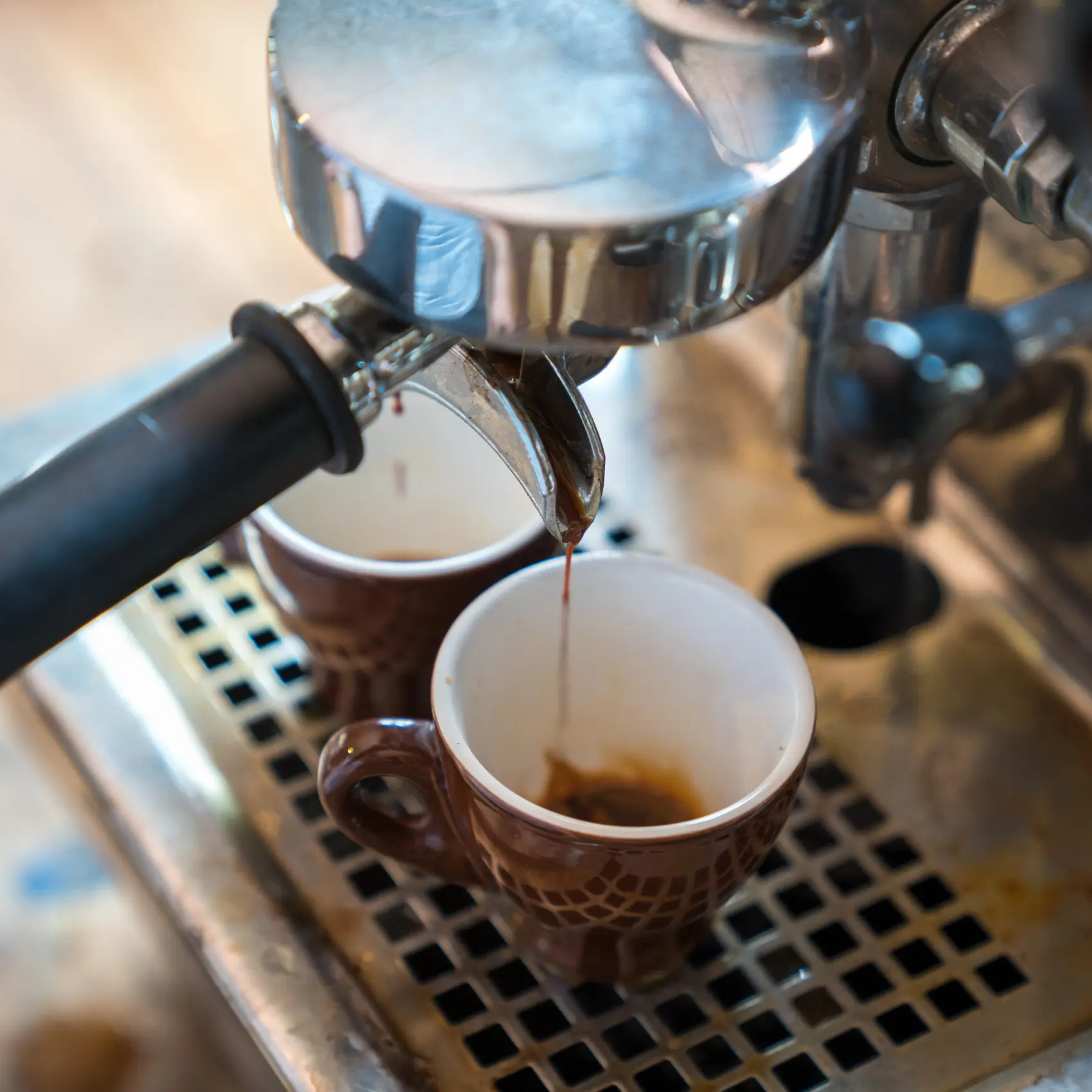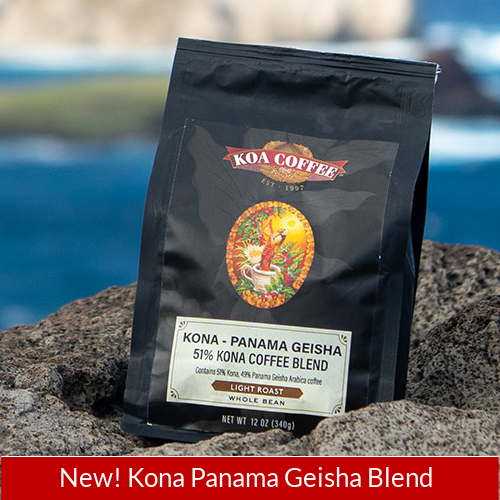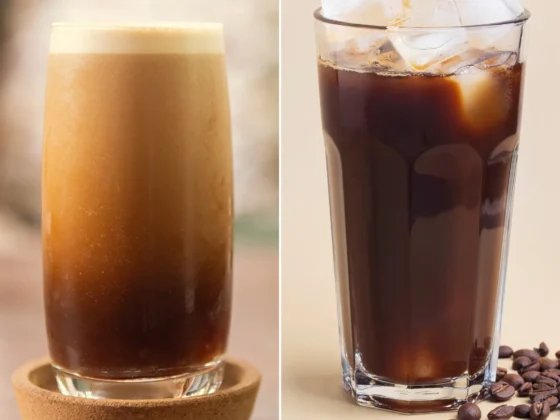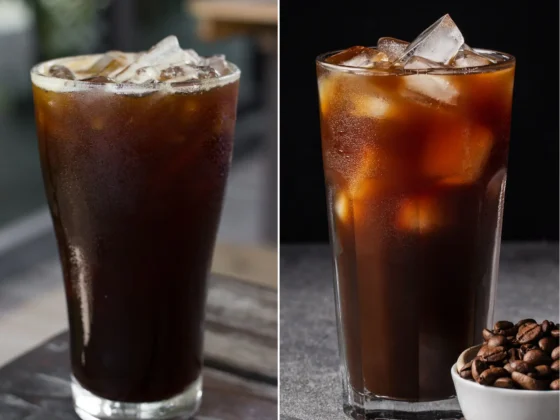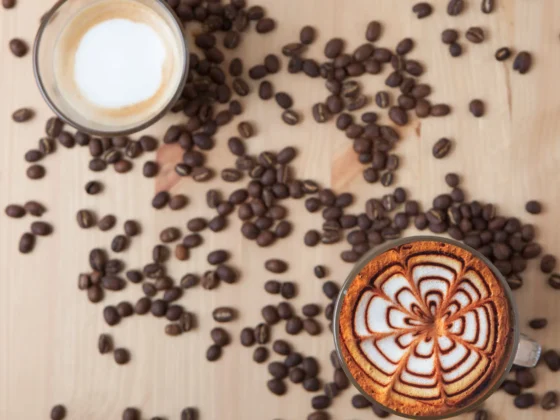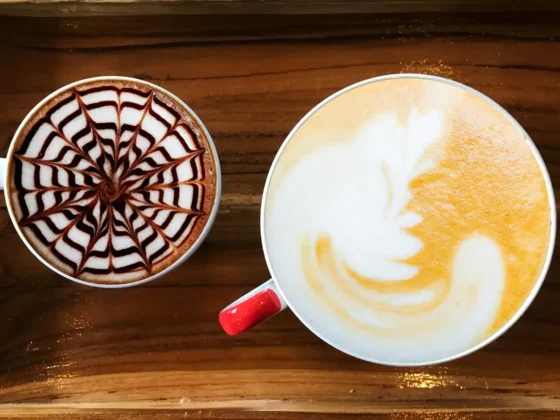Navigating the complexities of espresso brewing can often feel like an intricate dance of precision and intuition. One misstep, such as under extracted espresso, can significantly compromise the taste and quality of your coffee. This comprehensive guide aims to demystify the issue, offering targeted solutions to address it effectively. We’ll delve into everything from the importance of coffee bean freshness to the nuanced art of tamping, all while providing expert insights and advanced techniques used by world-class baristas. Whether you’re an aspiring home brewer or a seasoned café owner, this guide will equip you with the essential knowledge and tools to identify and remedy under-extracted espresso, thereby elevating your coffee-making skills to new heights.
Under-Extracted Espresso: Key Takeaway
- Bean Freshness and Grind: The quality and freshness of your coffee beans, as well as the uniformity of the grind, are fundamental to avoiding under extracted espresso. Burr grinders are recommended for achieving a consistent grind size, critical for optimal flavor extraction.
- Water Temperature and Time: Properly heated water (between 195°F and 205°F) and precise extraction timing (24-30 seconds) are crucial for full flavor extraction. Deviating from these parameters can lead to weak, under-extracted coffee.
- Tamping Technique: Effective tamping creates a smooth, even surface for water to pass through, ensuring uniform extraction. Poor tamping can cause water to channel unevenly through the coffee grounds, leading to under-extraction.
- Advanced Brewing Tips: World-class baristas often use advanced techniques to perfect their brews. Adopting these methods can help fine-tune your espresso-making process, allowing you to make adjustments for factors like bean roast and brewing pressure.
- Equipment Maintenance: Keeping your espresso machine in good working condition is essential. Regular cleaning and descaling, especially when using hard water, can prevent mineral build-up that might interfere with proper extraction, and consequently lead to under-extracted espresso.
What is Under-Extracted Espresso?
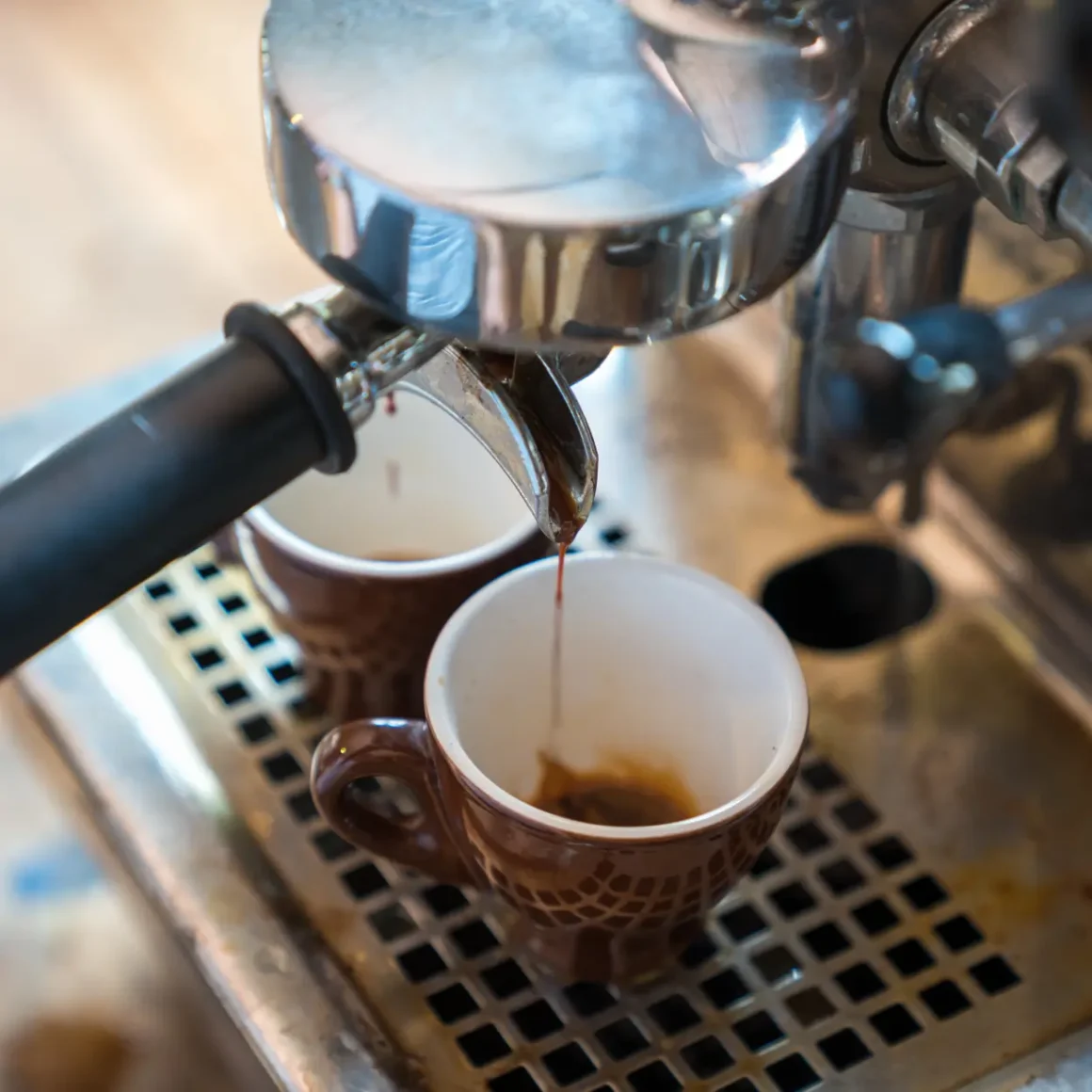
In the world of coffee brewing, achieving the perfect shot of espresso involves striking the right balance between various flavors and aromas. Under-extracted espresso occurs when that delicate balance is not reached, primarily because water has failed to pull out a sufficient range of elements from the coffee grounds. This results in a cup that lacks in depth and complexity, often tasting sour and uninviting.
The Science Behind Espresso Extraction
Grasping the scientific principles that govern espresso extraction is crucial to steer clear of an under-extracted brew. In an ideally extracted espresso, the water progresses through phases, each dedicated to pulling specific substances from the coffee grounds. These stages individually shape the final taste profile of your cup of espresso.
- Acids and Sugars: Initially, these compounds are the first to be released. They are pivotal in adding the initial notes of sweetness and acidity to your coffee.
- Soluble Solids and Fats: Following the acids and sugars, these components are extracted. They serve to provide the espresso with its full-bodied richness and depth.
- Bitter Elements: Finally, these substances are the last to be drawn out, and they are essential in introducing complexity and finalizing the balanced flavor spectrum of the espresso.
By precisely controlling factors like the timing of the extraction and the water’s temperature, you can eliminate the chances of both under and over-extraction, yielding a harmoniously balanced cup.
Symptoms of Under-Extraction in Your Cup
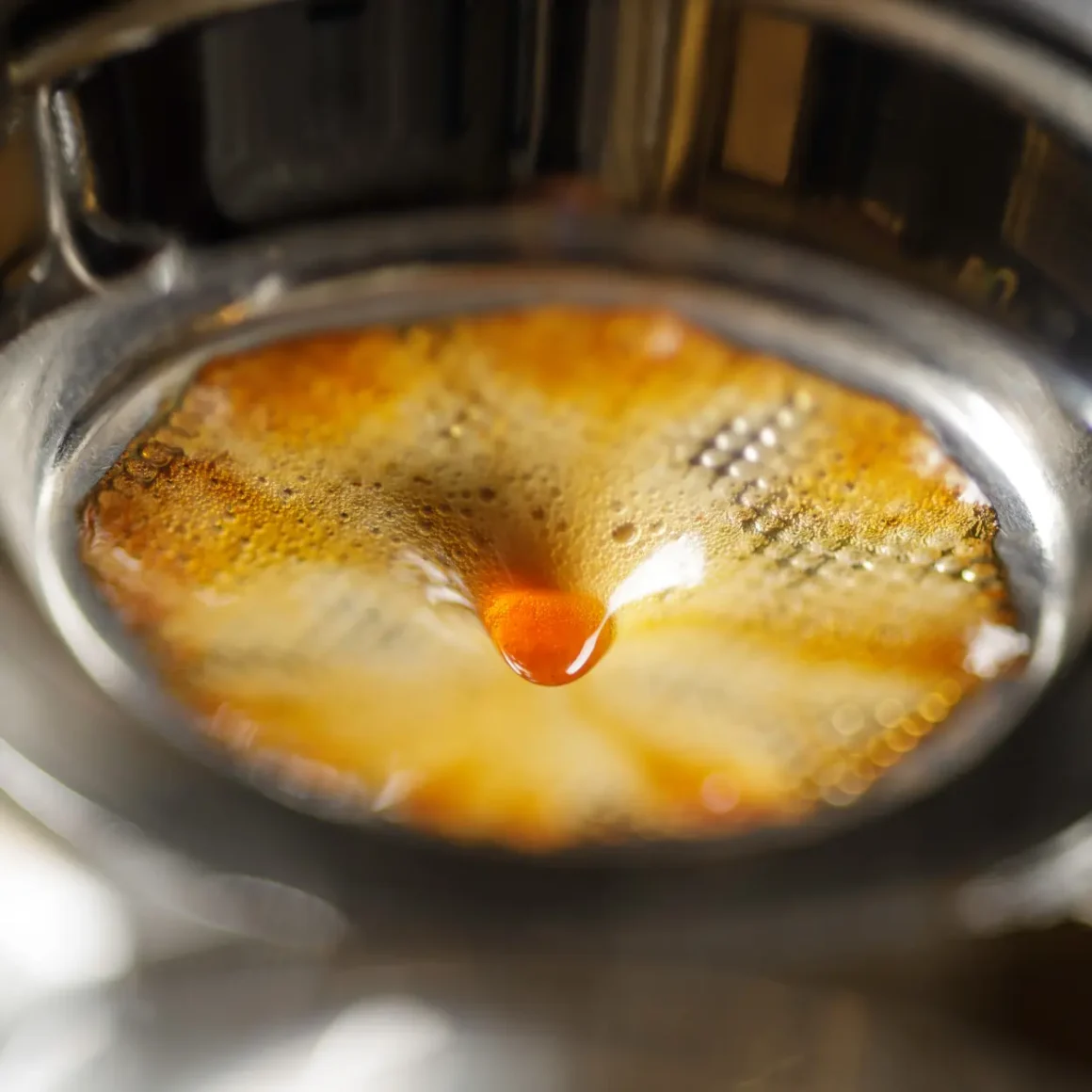
Recognizing the symptoms of under-extraction can help you adjust your brewing method for better results. Here’s how to identify if your espresso is under-extracted:
- Light Color: An under-extracted espresso will look lighter, almost translucent, missing many essential compounds that make up a rich, dark brew.
- Watery Texture: Because it lacks oils and soluble solids, the texture will feel thin and water-like.
- Sour Taste: Your palate will pick up a noticeable sourness, sometimes mistaken for the natural acidity of coffee.
- Lack of Depth: Unlike a well-brewed cup that lingers on your palate, flavors in an under extracted espresso will dissipate quickly.
Understanding these symptoms is the first step toward refining your brewing technique to produce a better cup.
Comparison: Under vs. Over-Extracted Espresso
The difference between under-extracted and over-extracted espresso lies in the balance and composition of flavors. Both are undesirable but manifest in distinct ways:
- Under-Extracted Espresso: Predominantly sour, lacking in depth, and watery. It doesn’t fully engage your senses and leaves much to be desired in terms of flavor complexity.
- Over-Extracted Espresso: Bitter and burnt, with an overwhelming intensity that masks the subtle nuances of the coffee. It often has a dry, gritty texture, making the experience unpleasurable.
Striking the balance between under and over-extraction is critical for a rewarding espresso experience. Learning to recognize these extremes can help you tweak your brewing methods for the ultimate cup of espresso.
Root Causes of Under-Extraction
Understanding what leads to under-extracted espresso is the first step in achieving that perfect cup. Many variables come into play when pulling an espresso shot, and when even one is off, it can significantly affect the quality of your brew. Below, we dive into some of the most critical factors that could be the culprits behind your under-extracted coffee.
The Role of Coffee Grind Size
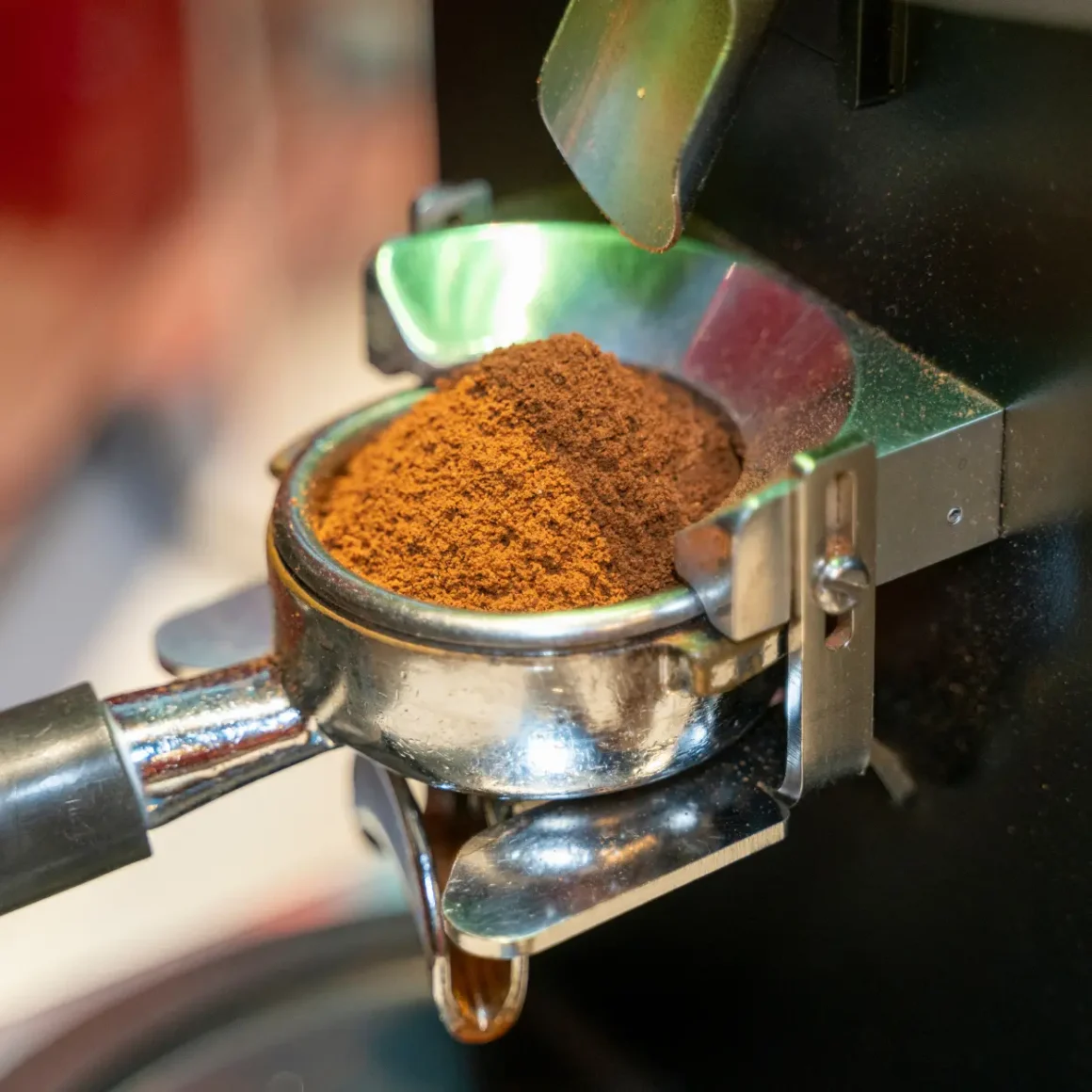
When it comes to brewing that perfect shot of espresso, the size of your coffee grounds cannot be overlooked. The grind size plays a monumental role in how water interacts with the coffee, which in turn impacts the extraction process.
- Too Coarse: If the grind is too large, water will rush through the coffee grounds without properly extracting the diverse flavors present in the beans. This often results in a bland, weak espresso.
- Too Fine: In contrast, an exceedingly fine grind can obstruct the water flow, leading to over-extraction and a subsequent bitter taste in your cup.
When you get the grind size right, you’re halfway to avoiding under-extracted espresso, and much closer to a balanced and flavorful cup.
Water Temperature and Pressure Factors

The role of water in espresso extraction extends beyond its fundamental function as a solvent. The temperature and pressure at which it interacts with the coffee grounds are equally significant.
- Low Temperature: If the water is not hot enough, it will lack the energy needed to effectively extract flavors, leading to a cup that is underwhelming and under-extracted.
- High Temperature: Overly hot water can damage the coffee grounds, causing undesirable bitter notes.
- Expert Tip: The optimal water temperature for brewing espresso should range between 90-96°C.
Knowing the right temperature and pressure conditions can prevent the pitfalls of under-extracted espresso, bringing you one step closer to the perfect cup.
Espresso Machine Calibration Issues
An often-overlooked factor that can lead to under-extracted espresso involves the calibration of your espresso machine.
- Inaccurate Timing: If the machine’s timer is off, this can result in either too short or too long extraction times, both of which are not ideal.
- Pressure Inconsistencies: Fluctuating pressure levels during the extraction process can also lead to uneven flavors in your cup.
Proper calibration and maintenance of your espresso machine are vital steps in avoiding under-extracted espresso and ensuring a consistently delightful cup each time.
Impacts of Under-Extraction on Flavor and Experience
Understanding the implications of under extracted espresso is crucial for any coffee aficionado. When coffee is not extracted properly, the outcome affects not only the flavor but also the overall sensory experience. Here we’ll delve into the nuances that define the taste profile, mouthfeel, and even how the origin of the coffee bean comes into play.
Taste Profile of an Under-Extracted Shot

When it comes to espresso, the taste is everything. But an under-extracted shot can wreak havoc on the flavor palette you’d typically expect from a well-made cup.
- Tartness Overload: One of the first things you’ll notice is an overpowering tartness. Unlike a balanced cup that harmonizes bitterness with other elements, under-extraction tips the scale toward sourness, sometimes even coming off as salty.
- Flat Complexity: The lack of essential oils and flavor compounds results in a one-dimensional taste experience. Gone are the inviting notes of chocolate and nuts that characterize a well-pulled shot.
In a nutshell, the flavor of an under extracted espresso leaves much to be desired. It lacks the balance and depth that are the hallmarks of a superb cup.
How Mouthfeel Is Affected
Mouthfeel is another vital element of a satisfying espresso experience. Let’s explore how under-extraction impacts it.
- Thin Texture: The absence of essential oils creates a diluted, watery consistency, far removed from the luxurious, syrup-like feel of a proper shot.
- Lack of Crema: A pale and deficient crema usually accompanies an under-extracted shot, lacking the rich and velvety top layer you’d anticipate.
Conclusively, an under extracted espresso delivers a disappointing mouthfeel that misses the full-bodied experience a properly extracted shot should offer.
The Relationship with Coffee Bean Origin
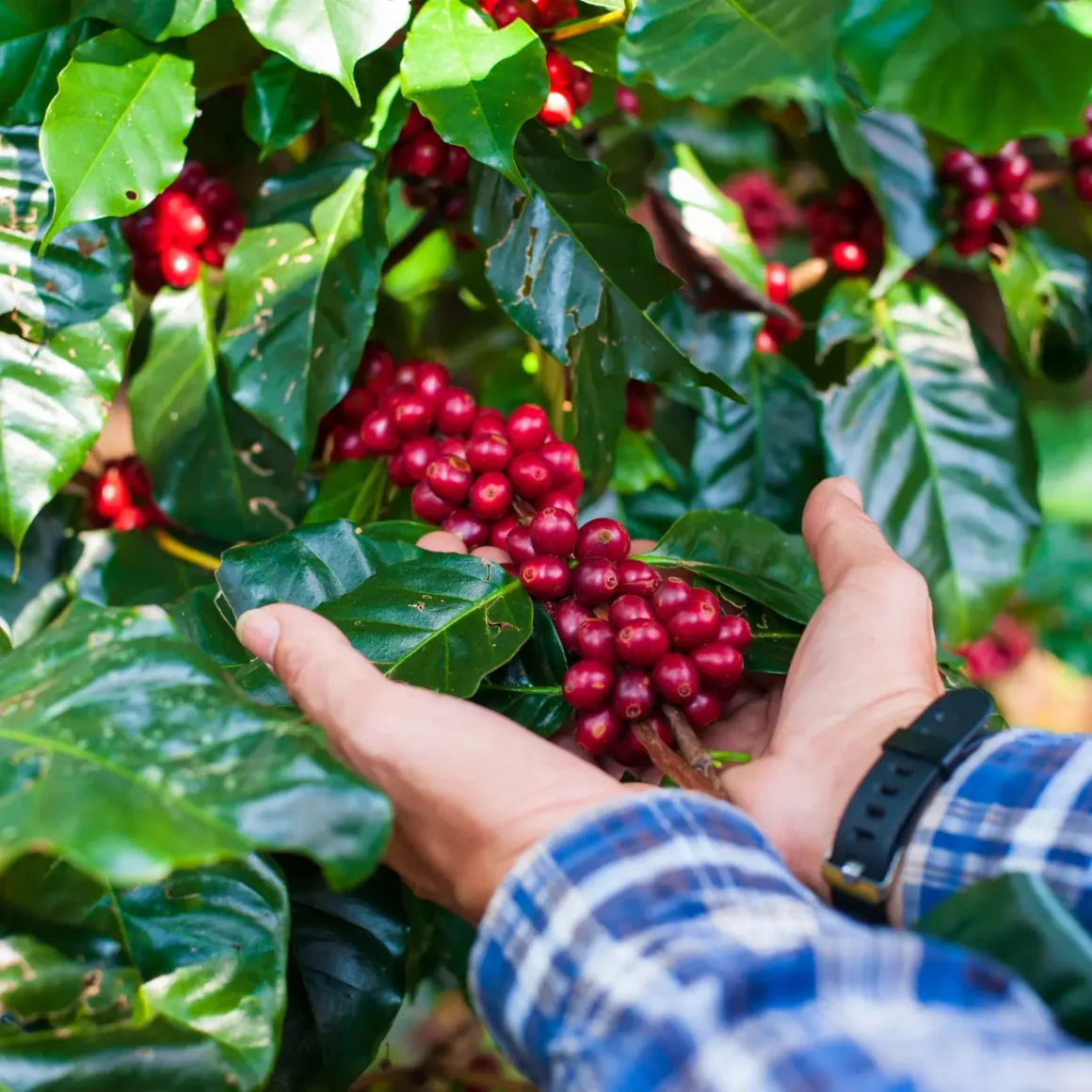
The place of origin of your coffee beans can significantly influence the taste and experience of your espresso, including when it is under-extracted.
- Accentuated Flaws: Beans from lesser-known or lower-quality regions may already have flaws that under-extraction will only magnify, such as increased tartness or a thin body.
- Wasted Potential: On the other hand, even if you invest in premium, single-origin beans, under-extraction can rob them of their unique qualities, making it hard to distinguish their nuanced flavors and aromas.
To sum it up, under-extracted espresso does a disservice to any coffee bean, whether it’s from a renowned or a lesser-known origin. It mutes the unique characteristics that make each bean special, denying you the pleasure of a complex, well-rounded cup.
Solutions and Adjustments for Perfect Extraction
When it comes to brewing coffee, achieving that perfect cup is a balancing act. The process may appear simple but involves multiple variables. From grind size to water temperature, a multitude of factors contribute to the outcome. This guide explores methods and best practices to rectify and perfect your brew, particularly focusing on how to fix under-extracted espresso.
Tweaking Your Grind for Optimal Results
The grind size of your coffee beans is a cornerstone of successful extraction. Often overlooked, this variable holds significant sway over your cup’s flavor profile.
- Fine Grind: Suitable for espresso and Aeropress, a fine grind maximizes surface area for a rich, full-bodied flavor. (1)
- Medium Grind: Ideal for drip coffee makers and pour-overs. Offers a balanced flavor, neither too strong nor too weak.
- Coarse Grind: Recommended for French Press and cold brew, this grind allows for a milder extraction, preventing over-extraction and bitterness.
Understanding your brew method and adjusting your grind size accordingly can enhance your coffee experience. If your coffee tastes too sour, chances are the grind is too coarse. On the other hand, a bitter taste often indicates an excessively fine grind.
Fine-tuning Machine Parameters
The machines and tools you use for brewing also play a crucial role in extraction. A slight adjustment in settings can make a significant difference in the cup.
- Water Temperature: Most brewing methods call for a water temperature between 195 to 205 degrees Fahrenheit. Too hot or too cold can throw off the extraction balance. (2)
- Brew Time: Different methods have their recommended brew durations. For example, an espresso shot typically takes 25-30 seconds, while a French Press may require up to 4 minutes.
- Pressure: Specifically for espresso machines, the pressure should be around 9-10 bars for optimal extraction.
By taking the time to fine-tune your machine’s parameters, you can ensure each cup reaches its full flavor potential.
The Importance of Regular Maintenance and Cleaning
Even with perfect settings and top-grade coffee, the importance of regular maintenance cannot be stressed enough.
- Cleaning the Grinder: Leftover grounds can become stale and interfere with your brew. Make it a practice to clean your grinder periodically.
- Descaling the Machine: Calcium buildup can not only affect the machine’s performance but also the taste of your coffee.
- Changing Filters: Using fresh filters can significantly improve the taste of your coffee, particularly for drip coffee makers.
Regular upkeep ensures your brewing setup functions at its best, yielding a cup that hits all the right notes. Neglecting maintenance is a surefire way to compromise the quality of your coffee, including cases of under-extracted espresso.
Professional Tips for Consistently Perfect Espresso
When it comes to brewing the quintessential shot of espresso, there are numerous variables at play. Achieving that ideal balance between aroma, flavor, and intensity is an art that requires attention to detail at every step. This guide aims to elevate your espresso game, from discussing the significance of bean freshness to delving into advanced techniques from the world’s leading baristas.
The Role of Freshness in Beans and Grind
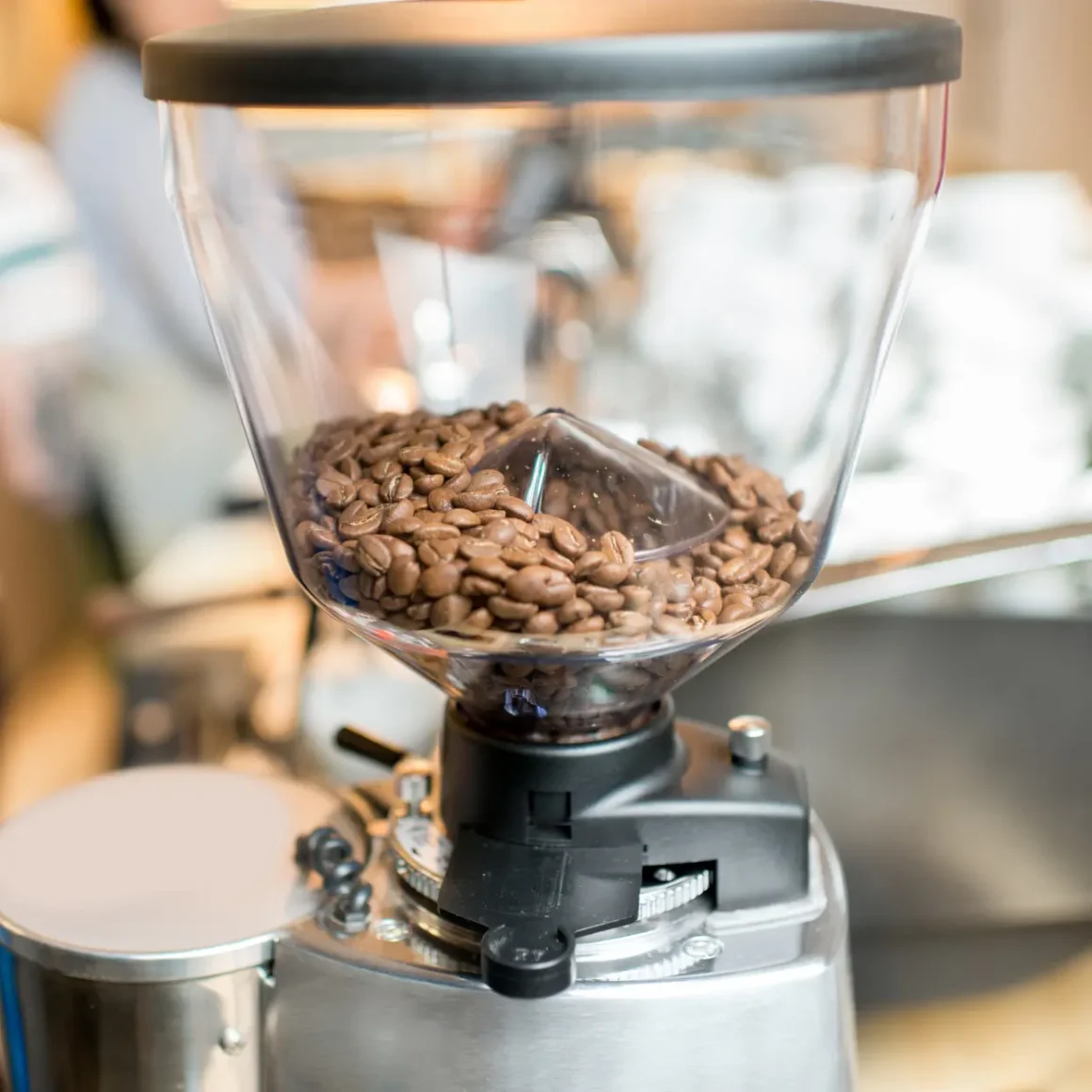
An often-underestimated aspect of a great cup of espresso is the freshness of the coffee beans and how they’re ground. Let’s explore this crucial element in detail:
- Immediate Use After Grinding: Coffee beans lose their aroma and flavor the moment they are ground. The use of freshly ground beans ensures optimal flavor extraction.
- Air-Tight Storage: After the coffee bag is opened, air becomes the enemy. Keep your beans in a vacuum-sealed container to minimize oxidation, which can significantly reduce your coffee’s flavor and aroma.
- Bean Expiry: While coffee beans won’t necessarily spoil quickly, they do lose their flavor profile after a couple of weeks. For the best results, use them within 14 days of opening the package.
The fresher the beans and the grind, the better your shot of espresso will be. Freshness is often the missing key to unlocking a world-class cup of coffee.
The Perfect Tamp: Pressure and Consistency
Proper tamping is a game-changer in the espresso brewing process. A bad tamp can lead to under-extraction, over-extraction, or even both. Let’s dive into this:
- Even Pressure: Applying consistent pressure when tamping is crucial. Ideally, you should aim for a pressure of about 30 pounds to pack the coffee grounds evenly.
- Flat Surface: Ensure that the tamp forms a flat, even surface on the coffee grounds. An uneven tamp can cause water to channel, leading to uneven extraction.
- Twist and Polish: After tamping, give the tamper a slight twist. This polishing action helps in creating a smooth surface that aids in even water distribution.
To sum it up, the key to an excellent tamp is in the consistency of your pressure and angle. Mastering this technique will significantly enhance the quality of your espresso shots.
Advanced Techniques from World-Class Baristas
If you’re looking to reach the pinnacle of espresso-making, there are certain advanced techniques that can elevate your brew. Let’s delve into these:
- Dialing In: This technique involves making minute adjustments to your grind size, temperature, and timing to perfect your espresso. World-class baristas often spend hours dialing in before service.
- Pre-Infusion: This method consists of lightly wetting the coffee grounds before applying full pressure. It helps in prepping the grounds for optimal extraction.
- Temperature Surfing: Some machines allow you to play around with the water temperature. A slightly higher or lower temperature can bring out specific flavor notes in your coffee, offering a unique tasting experience.
Adopting advanced brewing techniques not only refines the quality of your espresso but also turns the whole process into a high art. To become a maestro in espresso making, continual practice and a willingness to experiment are key.
Conclusion
In summary, achieving the perfect espresso is a multifaceted endeavor that involves a keen understanding of various factors such as bean freshness, grind uniformity, water temperature, and brewing time, among others. Neglecting any of these aspects can lead to issues like under extracted espresso, which affects both the flavor and overall quality of your coffee. By implementing professional tips, focusing on precise tamping techniques, and adopting advanced brewing methods shared by world-class baristas, you can significantly improve your chances of crafting a consistently remarkable cup.
Maintenance of your coffee equipment is also a crucial component that should not be overlooked, as it directly impacts your brewing efficiency and coffee quality. With the insights and solutions offered in this guide, you are now well-equipped to diagnose and remedy under-extracted espresso, ensuring that each cup you brew reaches its full potential.
FAQ
How does grind size affect espresso extraction?
A finer grind increases the surface area for better extraction, while an uneven grind can lead to under or over-extraction.
Why is water temperature crucial for perfect espresso?
Correct water temperature ensures optimal flavor extraction; too cold leads to under-extraction, and too hot can burn the coffee.
Can machine calibration lead to under-extraction?
Yes, improper calibration of pressure or temperature settings on your machine can result in under-extracted espresso.
Which coffee beans are best suited for espresso brewing?
Medium and dark roasts are generally preferred for espresso due to their solubility and richer flavors.
